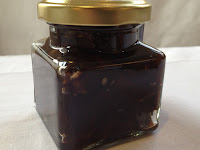Last Friday I catered for a private view of an artist exhibiting at the Greenwich Information Centre. At this event I wanted to demonstrate to the guests the simplicity and unique quality that makes South African finger bites so special. On offer were: potato and coriander samosas, cheese and onion samosas, chicken liver pate canapés, smoked trout pate canapés, smoked salmon and cream cheese canapés, vetkoek (Fat Cake) plain and Surprise (usually with a vienna inside), spinach fritters, crudités and some of my very own pickles and relishes for dips.
 |
| Plain Vetkoek (Fat Cakes) |
 |
| Potato and coriander Samosas |
 |
| Cheese and Onion Samosas |
 |
| Surprise Vetkoek, Chicken liver Canapés, Salt Beef bites |
 |
| L to R: Tomato Relish,Vegetable Pickle, Fruit Chutney and Lime Pickle |
 |
| Samosas, Smoke Trout and Smoke Salmon Canapés |
 |
| Samosas and Spinach Fritters |
Although some of the finger bites on offer clearly had vegetarians in mind it was enjoyed by everyone. The samosas, the spinach fritters and vetkoek were a particular hit and was much enjoyed complemented by all the homemade pickles and relishes. As a caterer it was interesting to note that of all the condiments on the table the Lime Pickle was a particular favourite. I had one guest asking if I had any available to sell! I do enjoy catering for small corporate functions. The intimacy of such events make it possible to offer people exactly what they enjoy which is most of all the unique South African delicacies on offer.
 |
| Chicken bites, Cocktail Frikkadels |
 |
| Surprise Vetkoek, Chicken liver Canapés, Salt Beef bites |










































